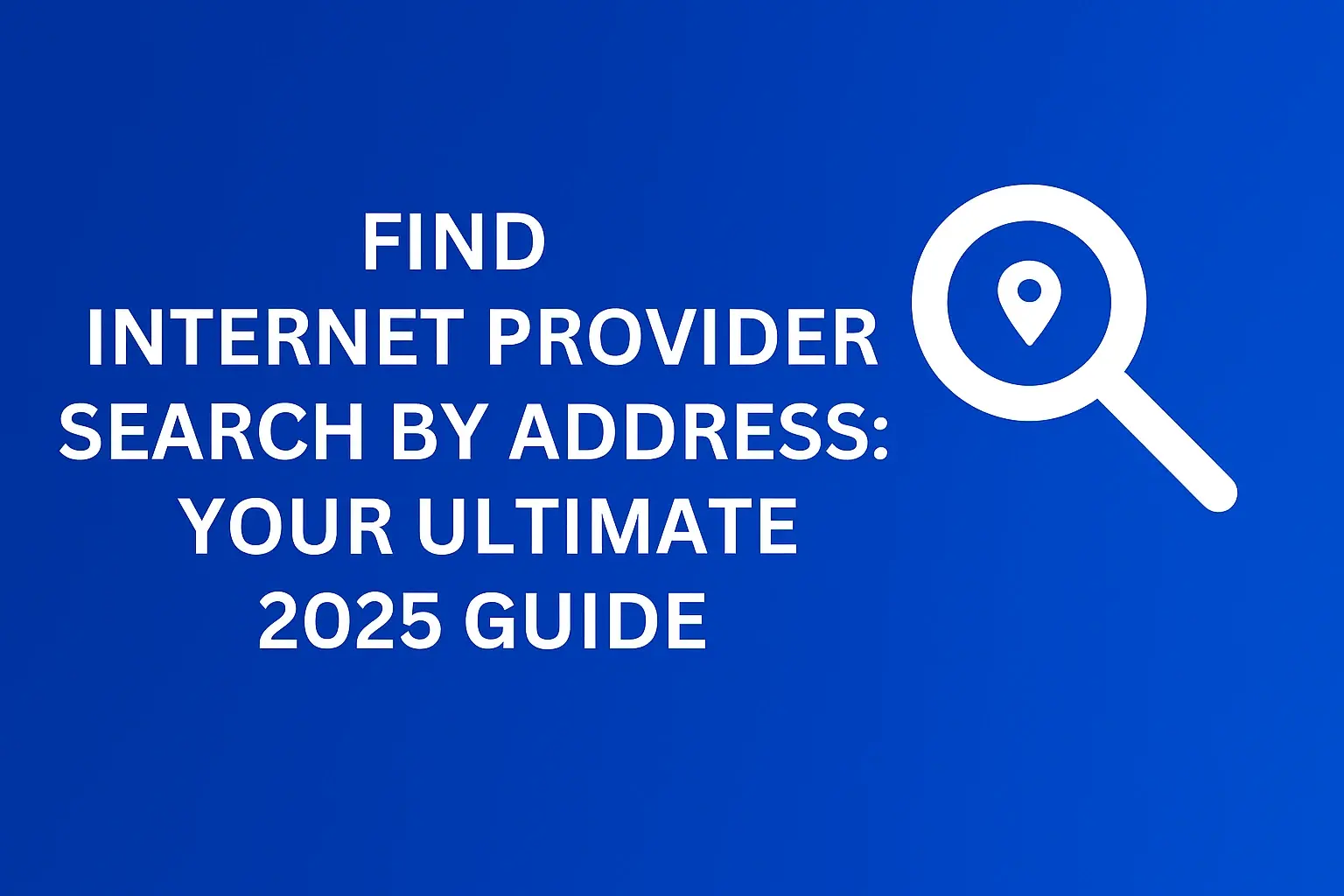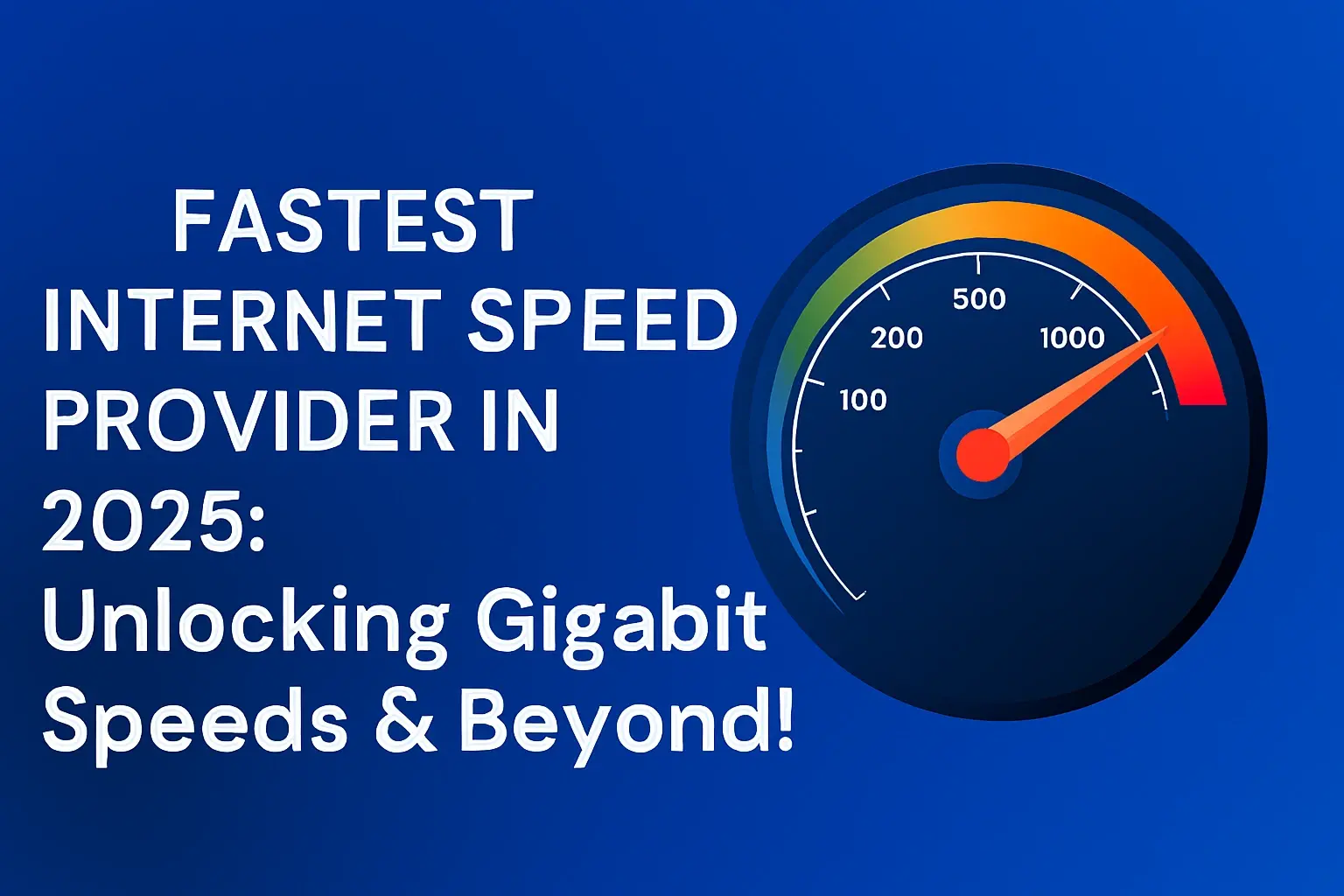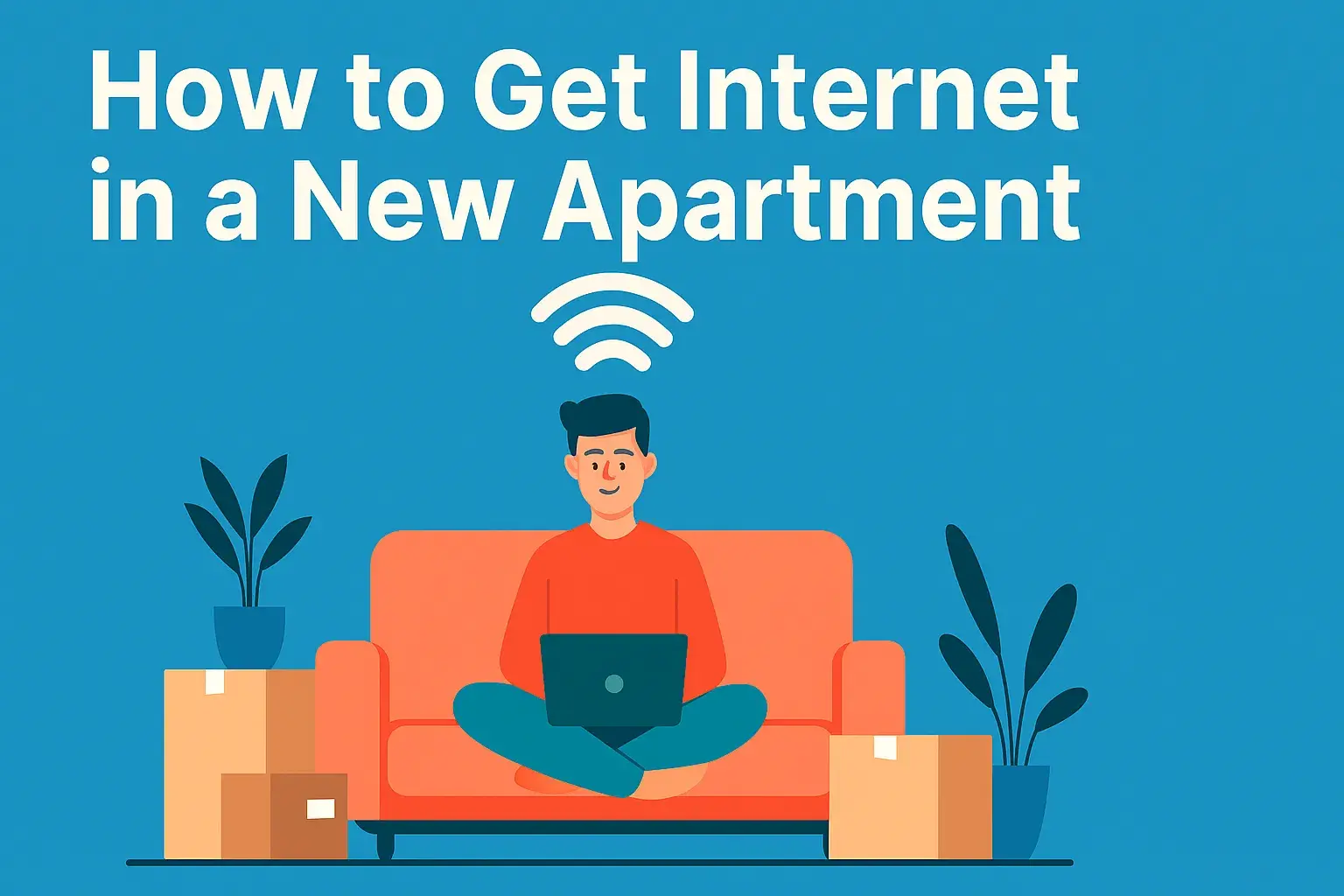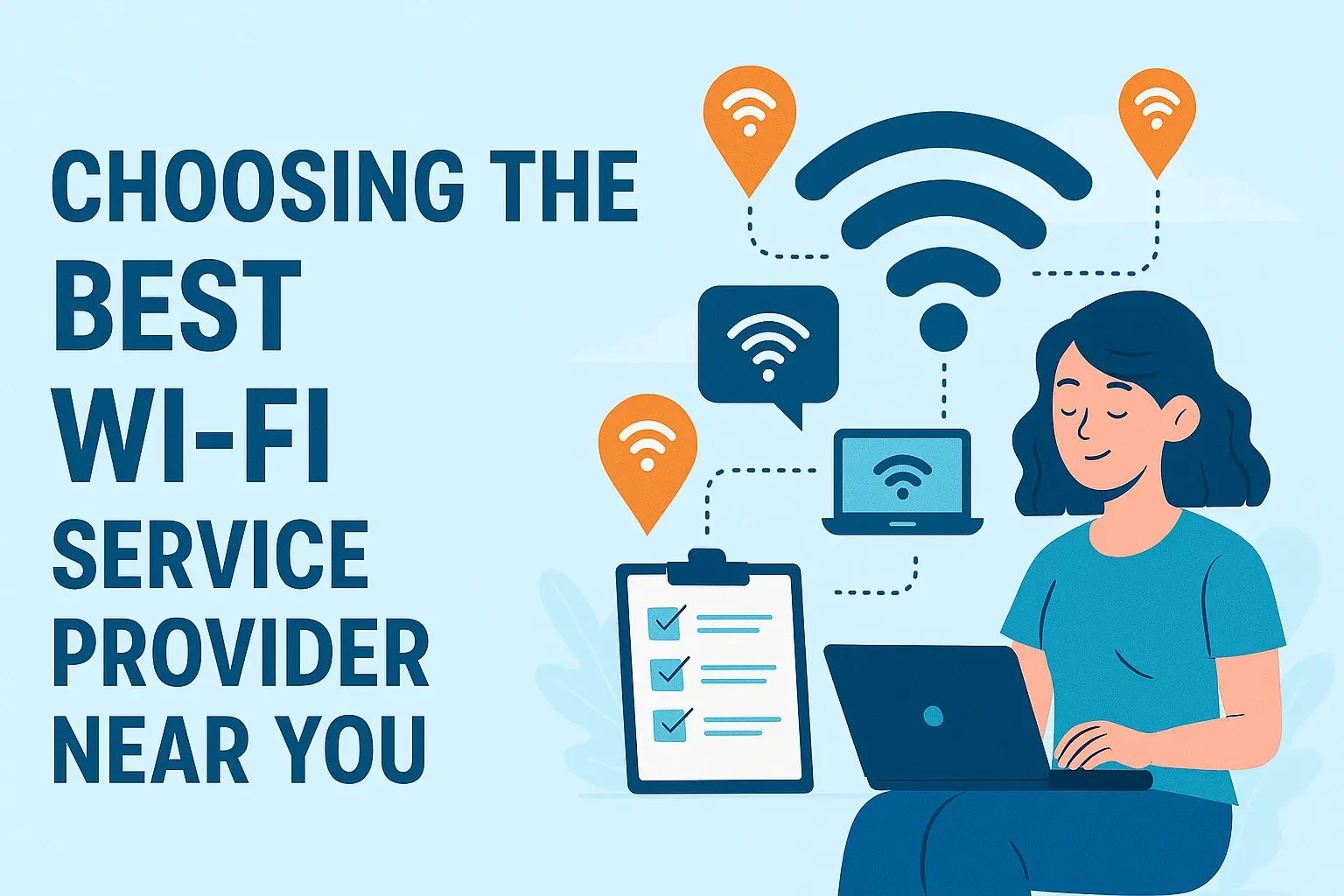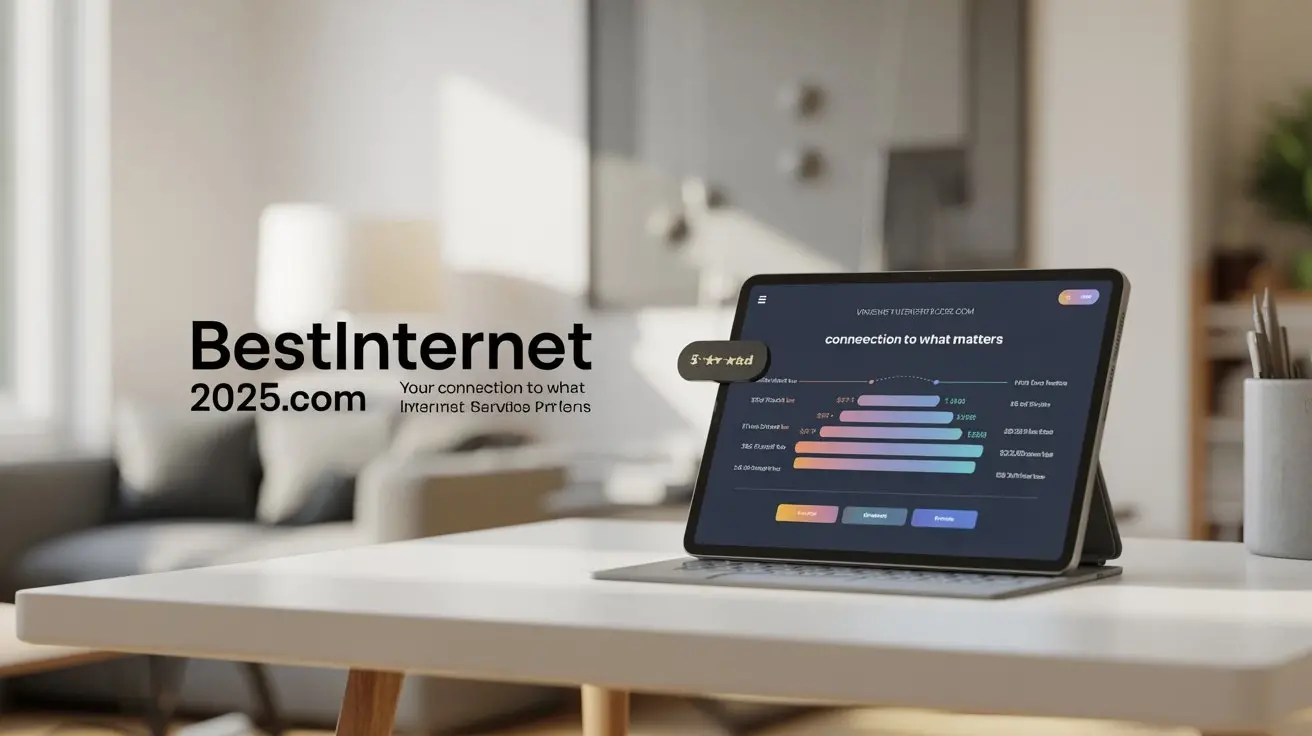Find Top Internet Providers in My Area Today

Struggling to find reliable internet service? This comprehensive 2025 guide helps you discover and compare top internet providers in your specific area. Learn how to assess speeds, understand plans, and secure the best deal for your home or business today. In 2025, a stable and fast internet connection isn't just a luxury; it's a necessity. Whether you're working from home, streaming your favorite shows, connecting with loved ones, or managing your smart home devices, the quality of your internet service directly impacts your daily life. But with a multitude of providers and technologies available, finding the best internet providers in your area can feel overwhelming. This comprehensive guide is designed to cut through the confusion, empowering you to find top internet providers in your area today with confidence. The digital landscape continues to evolve at lightning speed. By 2025, we're seeing increased reliance on cloud-based services, immersive online experiences like VR/AR, and a growing number of connected devices in every household. Your internet provider is the gateway to this digital world. Choosing the wrong one can lead to: Conversely, the right provider ensures seamless connectivity, supports your digital lifestyle, and offers excellent value for your money. This guide will equip you with the knowledge to make an informed decision and find the best internet service provider near you. Navigating the options to find available internet providers can seem daunting, but a structured approach makes it manageable. Follow these steps to efficiently discover and compare services in your specific location: Before you start comparing, understand what you'll be using the internet for. Are you a light user (email, browsing), a moderate user (streaming HD video, social media), or a heavy user (online gaming, multiple simultaneous streams, large file downloads/uploads, remote work requiring video conferencing)? Your usage dictates the speed and type of connection you'll need. We'll delve deeper into this later. This is the crucial first step to finding internet providers in my area today. Most major providers have online tools where you can enter your address or zip code to see what services are offered. Don't forget to check for smaller, local providers or municipal broadband options, as they can sometimes offer competitive pricing or superior service in specific regions. Actionable Tip: Use aggregator websites that allow you to input your zip code and instantly see a list of providers, technologies, and estimated speeds available at your address. These tools are invaluable for a quick overview. Availability is one thing, but quality is another. Look for independent reviews, consumer reports, and customer satisfaction ratings. Websites like the FCC's broadband map, Consumer Reports, and tech review sites can provide insights into provider performance and customer service. Key Insight: A provider with a wide service area might not offer the same quality of service everywhere. Focus on reviews specific to your region if possible. This is where you'll start to see the differences. Compare advertised download and upload speeds, check for data caps (limits on how much data you can use per month), and scrutinize the pricing. Pay close attention to: Different types of internet connections offer varying levels of performance. Fiber, Cable, DSL, and Satellite all have their pros and cons. Understanding these will help you choose the best option for your needs and budget. Many providers offer discounts if you bundle internet with TV or phone services. While bundling can save money, ensure you actually need the bundled services. Also, look for current promotions or special offers for new customers. Before signing up, always read the terms of service and any contract carefully. If anything is unclear, don't hesitate to contact the provider's sales or customer service department. Ask about hidden fees, contract termination policies, and any service guarantees. The technology behind your internet connection significantly impacts its speed, reliability, and availability. Here's a look at the primary types you'll encounter in 2025: What it is: Uses light signals transmitted through thin strands of glass or plastic. It's the most advanced and fastest internet technology available. Pros: Cons: Best for: Heavy users, gamers, businesses, households with many connected devices, and those who need symmetrical upload/download speeds. What it is: Transmits data over the same coaxial cables used for cable TV. It's a widely available and popular option. Pros: Cons: Best for: Most households, including those who stream HD content, browse extensively, and use social media. What it is: Uses existing copper telephone lines to transmit data. It's one of the oldest broadband technologies. Pros: Cons: Best for: Light internet users, those in rural areas where other options aren't available, or individuals on a very tight budget. What it is: Uses cellular networks (like 5G) to deliver internet to a fixed location. Fixed Wireless uses radio signals from a tower to a receiver in your home. Pros: Cons: Best for: Users in areas where wired options are limited or expensive, and those looking for a competitive alternative to traditional broadband. What it is: Uses a satellite dish to send and receive data from a satellite in orbit. It's often the only option in very remote locations. Pros: Cons: Best for: Extremely remote locations where no other internet service is available. To truly find the best internet plan for your needs, you need to look beyond just the advertised price. Here are the critical comparison points: While availability varies by location, some providers consistently rank high for their service offerings. Here's a look at some of the leading players you'll likely encounter when you search for internet providers in my area: Important Note: The providers and speeds listed above are general overviews. The absolute best internet provider for *you* depends entirely on your specific address. Always use provider tools or comparison sites to check real-time availability and exact plans. Internet pricing in 2025 can be a maze of introductory offers, hidden fees, and tiered plans. Here's how to make sense of it: Providers typically offer different plans based on speed: Many providers lure customers with low introductory rates that last for 12-24 months. After this period, the price can jump significantly. Always ask: This is a critical question that many consumers forget to ask, leading to sticker shock later. When comparing plans, create a spreadsheet to track the total monthly cost: This will give you a true picture of what you'll pay each month. In 2025, many cable and satellite providers still impose data caps. If you stream a lot of video, download large files, or have a smart home with many connected devices, you could easily exceed a 1TB (1000 GB) data cap. Unlimited data plans, especially from fiber and some cable providers, offer peace of mind. The most common mistake people make is overpaying for internet speeds they don't need, or conversely, getting speeds that are too slow for their activities. Here's a breakdown to help you find the right internet speed: Pro Tip: If you're unsure, it's often better to err on the side of slightly faster speeds. You can always downgrade later if you find you're not using the bandwidth. However, with fiber, you often get symmetrical speeds, which is a significant advantage for uploading content and video calls. The process of getting new internet service can vary: Some providers, especially for DSL, cable, and 5G home internet, offer self-installation kits. This involves plugging in a modem/router provided by the company and following simple setup instructions. It's usually the cheapest and fastest way to get online. Fiber optic installations almost always require a professional technician. They will run a cable to your home, install a new network interface, and set up your modem/router. Cable and DSL might also require a technician if new wiring is needed or if you prefer not to do it yourself. Be Prepared: When your internet goes down, or you have a billing question, good customer service is invaluable. Competitors often overlook this crucial aspect, but it can make or break your experience with an ISP. When researching providers, look for: A provider that is difficult to reach or slow to resolve problems can be more frustrating than slightly slower speeds. Finding the right internet provider in 2025 is about more than just getting online; it's about securing a reliable connection that supports your modern digital life. By understanding the different technologies, meticulously comparing speeds, data caps, and pricing, and paying close attention to customer service and contract terms, you are well-equipped to find top internet providers in my area today. Don't let the complexity deter you; armed with the knowledge from this guide, you can confidently navigate the options, avoid common pitfalls, and secure a fast, dependable internet service that meets your needs and budget. Take the steps outlined here, and you'll be on your way to a seamless online experience. Your journey to better connectivity begins with informed choices, so start your research now and unlock the full potential of the digital world.Find Top Internet Providers in My Area Today: Your Ultimate 2025 Connection Guide
Why Finding the Right Internet Provider Matters in 2025
Your Step-by-Step Guide to Finding Top Internet Providers in Your Area
Step 1: Determine Your Internet Needs
Step 2: Identify Available Providers in Your Zip Code
Step 3: Research Provider Reputation and Reliability
Step 4: Compare Speeds, Data Caps, and Pricing
Step 5: Understand the Technology Offered
Step 6: Check for Bundles and Promotions
Step 7: Read the Fine Print and Ask Questions
Understanding Today's Internet Technologies (2025 Edition)
Fiber Optic Internet
Cable Internet
DSL (Digital Subscriber Line) Internet
5G Home Internet / Fixed Wireless
Satellite Internet
Key Factors to Compare When Choosing an Internet Provider
Factor
What to Look For
Why It Matters
Advertised Speed
Download & Upload Mbps (Megabits per second). Check if it's symmetrical (same upload/download).
Determines how quickly you can download files, stream content, and upload data. Symmetrical speeds are crucial for video calls and content creation.
Data Caps
Monthly data allowance (e.g., 1TB, unlimited).
Exceeding data caps can result in throttling (slowed speeds) or overage charges. Unlimited is ideal for heavy users.
Pricing & Fees
Monthly cost, intro rates, regular rates, equipment rental, installation fees, taxes.
Ensures you understand the total cost of ownership and avoid surprise charges. Look for transparent pricing.
Contract Length
Month-to-month vs. 12/24-month contracts. Early termination fees.
Provides flexibility. Contracts can lock you into a plan even if better options become available or your needs change.
Technology Type
Fiber, Cable, DSL, 5G Home Internet, Satellite.
Dictates performance, reliability, and availability. Fiber is generally superior.
Customer Service & Reliability
Online reviews, customer satisfaction scores, and FCC complaint data.
Ensures you can get help when needed and that the service is consistently available.
Bundling Options
Internet + TV, Internet + Phone packages.
It can offer cost savings if you need multiple services, but evaluate if the bundle is truly beneficial.
Top Internet Providers in the US (2025 Snapshot)
Provider
Primary Technology
Typical Speeds (Download)
Availability
Notes
Verizon Fios
Fiber Optic
Up to 2 Gbps
Northeastern US, select other areas.
Excellent symmetrical speeds, reliable, and great for demanding users.
AT&T Fiber
Fiber Optic
Up to 5 Gbps
Expanding nationwide, strong in the Southern and Western US.
Competitive pricing, high speeds, and reliability.
Xfinity (Comcast)
Cable
Up to 2 Gbps
Nationwide.
Widely available, competitive speeds, often bundled with TV. Speeds can vary by location.
Spectrum (Charter)
Cable
Up to 1 Gbps
Nationwide.
No data caps on most plans, widely available, good speeds.
Google Fiber
Fiber Optic
Up to 2 Gbps
Limited but expanding markets (e.g., Kansas City, Atlanta, Austin).
Excellent value for fiber, simple pricing.
T-Mobile Home Internet
5G Home Internet
Varies (often 75-245 Mbps)
Growing nationwide availability.
No data caps, often affordable, easy setup, speeds can fluctuate.
Starlink (SpaceX)
Satellite
Varies (often 50-200 Mbps)
Global availability.
Best for rural/remote areas. High latency can be affected by weather.
Navigating 2025 Internet Pricing and Plans
Understanding Speed Tiers
Beware of Promotional Pricing
"What will the price be after the promotional period ends?"
Factor in All Costs
Are Data Caps Worth It?
Determining Your Internet Speed Needs
Activity
Recommended Download Speed
Recommended Upload Speed
Number of Users/Devices
Basic Browsing, Email, Social Media
10-25 Mbps
1-5 Mbps
1-2
Streaming HD Video (Netflix, YouTube)
25-50 Mbps
5-10 Mbps
1-3
Streaming 4K Video, Multiple Streams
50-100 Mbps
10-20 Mbps
3-5+
Online Gaming (Standard)
50-100 Mbps
10-25 Mbps
1-2 (Low latency is key)
Video Conferencing (Zoom, Teams)
25-50 Mbps
10-25 Mbps
1-3 (Stable upload is crucial)
Large File Downloads/Uploads, Content Creation
100 Mbps+
20 Mbps+ (Symmetrical preferred)
2+
Smart Home Devices, IoT
Add 5-10 Mbps per device
Add 1-2 Mbps per device
Varies
Installation and Setup: What to Expect
Self-Installation
Professional Installation
The Importance of Customer Service
Your Path to Better Internet Starts Now
Faq
Q1: How can I find out which internet providers are truly available at my exact address, not just my zip code?
While zip code searches are a good starting point, the most accurate way is to use the provider's own online address lookup tool on their official website. Aggregator sites are also helpful, but always verify directly with the provider. For fiber, availability is often limited to specific streets or even buildings due to the infrastructure required.
Q2: What's the difference between advertised speeds and actual speeds?
Advertised speeds are the maximum potential speeds under ideal conditions. Actual speeds can be affected by factors like network congestion (especially with cable), the quality of your home wiring, the number of devices connected, your Wi-Fi signal strength, and the server you're connecting to. Fiber optic internet tends to offer speeds closest to advertised rates due to its dedicated nature.
Q3: Are there any "hidden" fees I should watch out for besides installation and equipment rental?
Yes, absolutely. Common hidden fees include: Activation Fees: A one-time charge for setting up your service. Early Termination Fees (ETFs): If you break a contract early. Service Call Fees: If a technician needs to come out for an issue that's deemed not to be the provider's fault (e.g., your own equipment issue). Late Payment Fees: Standard for any bill, but ensure you know the amounts. Regulatory Fees/Surcharges: Small, often recurring fees that are difficult to avoid.
Q4: I live in a rural area. What are my best options for finding decent internet service?
Rural areas often have limited choices. Your best bets are typically: DSL: If a phone line is available, DSL might be an option, though speeds can be slow. Satellite Internet: Starlink is a newer, faster satellite option, but still has latency issues. Traditional satellite (HughesNet, Viasat) is generally slow and has strict data caps. Fixed Wireless: Some local providers offer fixed wireless from nearby towers. 5G Home Internet: If you have good cellular coverage, this could be a viable option.
Q5: How can I ensure I'm getting the best deal when signing up for internet service?
To secure the best deal: Shop Around: Never settle for the first provider you find. Compare at least 2-3 options. Negotiate: Sometimes, providers will match or beat competitor offers, especially if you mention their promotions. Look for New Customer Deals: These are often the most significant discounts. Consider Contract Length: While longer contracts might offer lower monthly rates, month-to-month offers flexibility. Weigh the pros and cons. Check for Rebates: Some providers offer mail-in rebates or gift cards for signing up. Timing can also matter; providers often run promotions during holidays or specific sales periods.
Q6: Is it worth paying extra for gigabit internet speeds in 2025?
For most households, gigabit speeds (1000 Mbps and above) are overkill unless you have very specific needs. If you have a large family with many people simultaneously streaming 4K video, downloading massive files daily, or running a home-based business that requires constant large data transfers and remote access, then yes, it can be worth it. However, for typical home use, speeds between 100-500 Mbps are often more than sufficient and significantly cheaper. Always assess your actual usage patterns.
